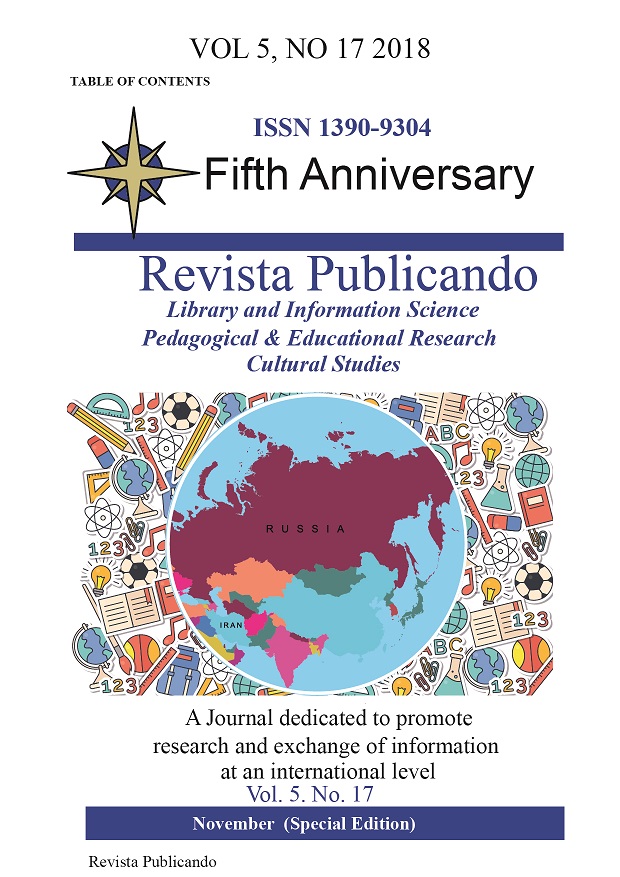Resumen
In the emphasis on knowledge as a key competitive factor in the global economy, corporations may be overlooking a major element – customer knowledge. Customer knowledge management (CKM) creates new knowledge sharing platforms and processes between companies and their customers. Customer education is one of the best ways of customer knowledge management. Despite companies”™ growing interest for customer education and the recent awareness in marketing literature of this concept, research on customer education remains relatively scarce. In this research a model which details the relationships between customer education and customer satisfaction was proposed and validated for Nano food product. The existence of two mediating variables was unveiled: product usage and product-usage related knowledge and skills. The experimental fieldwork was conducted in partnership with Nano food companies and their customers. In this research, clear evidence has been provided that customer education positively impacts on customer satisfaction and that specific mechanisms explain such effects.Referencias
Aubert,B.(2007). Customer education:Definition, measures and effects on customer satisfaction,Newcastle University,UK.
Bitner, M. J., Faranda, W., Hubbert, A. R. and Zeithaml, V. (1997). Customer contributions and roles in service delivery. International Journal of Service Industry Management, 8(3), 193-205.
Bolton, R. N. and Lemon, K. N. (1999). A Dynamic Model of Customers' Usage of Services: Usage as an Antecedent and Consequence of Satisfaction. Journal of Marketing Research, 36(2), 171-186.
Bonfanti, A. and Brunetti, F., (2014). Effects of customer education in terms of customer perceived value: the role of customer evaluation skills. Sinergie Italian Journal of Management, pp.219-238.
Darroch,J and Mcnaughton,R.(2003). Beyond market orientation: Knowledge management and the innovativeness of New Zealand firms.European Journal of Marketing 37,572-593
Downing, C. E. (1999). System usage behavior as a proxy for user satisfaction: an empirical investigation. Information and Management, 35(4), 203-216.
Fornell, C., Mithas, S., Morgeson F. V. and Krishnan, M. S. (2006). Customer Satisfaction and Stock Prices: High Returns, Low Risk. Journal of Marketing, 70(1), 3-14.
Gibbert,M. and Probst,G.(2002). Five styles of customer knowledge management,and how smart companies use them to create value.European Management Journal 20(5),459-469
Hennig-Thurau, T. (2000). Relationship quality and customer retention through strategic communication of customer skills. Journal of Marketing Management, 16(1-3), 55-79.
Honebein, P. C. (1997). Strategies for Effective Customer Education. Chicago: NTC Books.
Jones, M. A., Taylor, V. A., Becherer, R. C. and Halstead, D. (2003). The impact of instruction understanding on satisfaction and switching intentions. Journal of Consumer Satisfaction, Dissatisfaction and Complaining Behavior, 16,10-18.
Meer, C. G. (1984). Customer Education. Chicago: Nelson-Hall.
Mittal, V. and Anderson, E. W. (2000). Strengthening the satisfaction-profit chain. Journal of Services Research, 3(2), 107-120.
Mittal, V. and Sawhney, M. S. (2001). Learning and Using Electronic Information Products and Services: A Field Study. Journal of Interactive Marketing, 15(1), 2-12.
Noel, J. L., Ulrich, D. and Mercer, S. V. (1990). Customer Education: A New Frontier for Human Resource Development. Human Resource Management, 29(4), 411-434.
Oliver, R. L. (1981). Measurement and Evaluation of Satisfaction Process in Retail Settings. Journal of Retailing, 57(3), 25-42.
Oliver, R. L. (1997). Satisfaction: A Behavioral Perspective on the Consumer. Boston: McGraw-Hill.
Paquette,s.(2006). Customer knowledge management, Encyclopedia of Knowledge Management:Idea Group Inc.
Ram, S. and Jung, H. S. (1991). How Product Usage Influences Consumer Satisfaction. Marketing Letters, 2(4), 403-411.
Rowley,J.(2002). Eight questions for CKM in e-business.Journal of Knowledge Management,6(5),500-511
Shih, C. F. and Venkatesh, A. (2004). Beyond Adoption: Development and Application of a Use-Diffusion Model. Journal of Marketing, 68(1), 59-72.
Suh, M., Greene, H., Israilov, B. and Rho, T., (2015). The impact of customer education on customer loyalty through service quality. Services Marketing Quarterly, 36(3), pp.261-280.
Thompson, D. V., Hamilton, R. W. and Rust, R. T (2005). Feature Fatigue: When Product Capabilities Become Too Much of a Good Thing. Journal of Marketing Research, 42(4), 431-442.
Westbrook, R. A. (1987). Product/consumption based affective responses and postpurchase processes. Journal of Marketing Research, 24(3), 25 8-270.
Wood, S. L. and Lynch J. G. Jr (2002). Prior Knowledge and Complacency in New Product Learning. Journal of Consumer Research, 29(3), 416-426.
Usted es libre de:
Compartir — copiar y redistribuir el material en cualquier medio o formato
Adaptar — remezclar, transformar y construir a partir del material
La licenciante no puede revocar estas libertades en tanto usted siga los términos de la licencia
Bajo los siguientes términos:
Atribución — Usted debe dar crédito de manera adecuada, brindar un enlace a la licencia, e indicar si se han realizado cambios. Puede hacerlo en cualquier forma razonable, pero no de forma tal que sugiera que usted o su uso tienen el apoyo de la licenciante.
NoComercial — Usted no puede hacer uso del material con propósitos comerciales.
CompartirIgual — Si remezcla, transforma o crea a partir del material, debe distribuir su contribución bajo la lamisma licencia del original.
